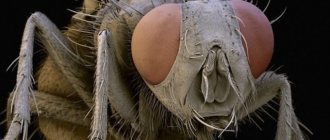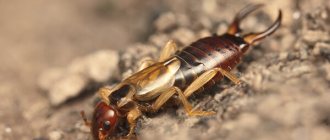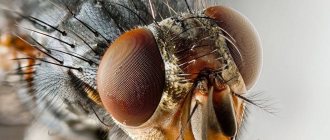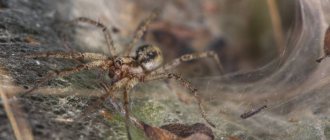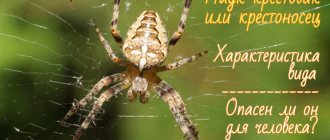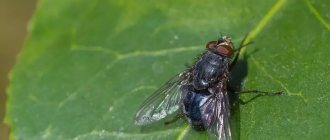Almost all summer residents have probably tried to get rid of moles on their property. Small pests can cause great damage to plants, lawns and flower beds. It is very difficult to notice their presence; it is possible to detect only traces of the animal’s visit to the summer cottage in the form of holes and earthen slides. In a few days, a well-groomed lawn can turn into a dug up lawn, so the issue of protecting the garden, vegetable garden and the rest of the territory is extremely pressing.
Habitat specifics
To better understand how to get rid of moles in a summer cottage, you need to know what living conditions and search for food are preferable for animals, and what does not attract them at all and even repels them. Moles are insectivorous mammals and are found in loose soil. The direction of movement underground is selected using a well-developed sense of touch and smell. These senses help moles not only in searching for food, but also in avoiding traps.
Damage to the root system of plants occurs unintentionally when searching for worms and insects. The plants themselves are of no interest to moles. Trying to fill up underground passages, holes and remove earthen hills is useless. The animals are incredibly hardworking and check their passages every hour and develop backfilled areas. In addition, the mammal is an excellent swimmer, shows extreme caution and can scratch and bite in self-defense.
There are also unfavorable conditions for moles to live. First of all, it is clay soil, a large amount of crushed stone. Infertile soil and sand are also of little interest to moles due to the small amount of potential food in it. The greatest danger to the animals is the raccoon dog and the fox, which are excellent at tracking down mammals.
How to get rid of moles
The following few methods will help you drive earth guests away from your site.
An effective first step is to treat the soil with dried blood, tobacco, or a similar repellent. Remember to repeat the procedure after each rain.
A cat that loves to walk in garden beds is an excellent deterrent for many rodents.
Moles are carnivores that are at home in lawns rich in grubs and insects. If their food tastes like castor oil, they will go elsewhere to feed. Prepare a mixture of 3 parts castor oil to 1 part dish soap. Mix with 4.5 liters of water and water tunnels and entrances.
Dip an ear of corn in roofing tar and place it in one of the tunnels. Moles hate the smell of tar and their path will be blocked.
Powdered red pepper scattered at the entrances to burrows also repels animals, and coffee beans scattered on the ground discourage moles from digging tunnels.
Perhaps you will be lucky and, by using wind energy and creating vibrations in the ground, you will be able to cause discomfort to the underground inhabitants, thereby driving them away. Simple repellers can be made from plastic bottles with slots placed on sticks. The stick is driven into the ground near the entrance to the hole, and the vibration and noise created by the wind irritate the moles.
If the mole problem cannot be solved, then capture is the best solution. Often, this is the only way to get rid of them. Use a humane trap and release the animal at least 5 miles from your home and away from anyone else's garden.
The benefits and harms of moles
In nature, everything is balanced and harmoniously developed. For a single summer cottage, moles always pose a danger. But in some cases, mammals can have a positive effect on soil and plant growth. Before you think about how to destroy a mole on your site, you should take into account all the positive and negative aspects of the presence of insectivores. There are, of course, more negative factors for a well-groomed area:
- damage to the root system of plants in search of food;
- destruction of earthworms, which form the basis of their diet, which disrupts soil aeration;
- damage to the appearance, as hills and holes appear on the lawn and area;
- removal of low-fertility substrate to the soil surface, as a result of which the quality of the land significantly deteriorates;
- dug passages of many kilometers remain even after the mole moves to another area, other pests appear in the holes - house rats and mice.
The powerful front paws of moles can damage the root system of young trees and small shrubs, so the uncontrolled presence of mammals on the site can lead to the complete destruction of the entire crop.
After such weighty arguments, the positive aspects of the presence of moles on the site will seem doubtful. But they are:
- increasing the level of nitrogen in the soil, which promotes better crop growth;
- together with earthworms, moles destroy many harmful insects;
- In search of food, mammals excellently loosen the soil, saturating it with oxygen.
If the first signs of a mole’s presence appear on the territory of the dacha, then you should wait for its relatives. Small mammals live in entire families.
Basic information
Their habitat is more common in forest and forest-steppe zones, so these mammals are not found at all in Africa. Moles are distinguished by their accelerated metabolic rate - this forces them to eat frequently, since 10 - 12 hours of fasting leads to exhaustion and death. Nesting sites are made in dense soil, preferring places under tree roots or protected from above by something else.
In narrow passages, the mole moves in a convenient direction, which is why the short fur quickly wears out and promotes natural molting (3-4 times a year). It has an elongated snout with small eyes. The forelimbs are distinguished by additional bones on the side, with hands turned backwards.
All varieties of moles have much in common:
- the front paws are used to dig the ground;
- underground inhabitants;
- sensitive to the level of soil hardness;
- have uniform fur color.
Individuals of Talpidae do not want to go into open spaces, and choose areas for settlement with wide forest vegetation. Moderately moist soil is optimal conditions for existence. The mole avoids swampy and sandy soil base.
The animal leads a secluded lifestyle, but does not stop its activity throughout the year. Mammals build their burrow systems by occupying a specific area. The period of wakefulness is associated with an abundance of food and is replaced by periods of sleep of 4 hours. Leads a sedentary lifestyle, but can move 1-4 km from the place of settlement. When developing an unexplored area, it sometimes comes to the surface.
The earthworm family is the main component of the diet. It also feeds on other invertebrates, which include various insects and larvae. In its moves it can also catch small rodents, various lizards, and frogs.
Peak reproduction begins in the first spring months. It produces one litter of up to 9 cubs per year. Newborns grow to the size of adult animals in a month, so starting from 1.5 months they settle independently. The lifespan of different species of Talpidae is 4-5 years.
Ways to fight
It is quite natural that for most summer residents the appearance of the site and the safety of the harvest come first. Today, one of the most important problems is moles in the country. You can get rid of them using folk remedies, chemicals or technical devices. Each method has its own advantages and disadvantages.
Pest repellent
This method of control is the most humane towards animals and does not cause any harm to the soil and plants. The main task is to force the moles to leave the territory. The most effective deterrents are:
- Electronic repellers. They are microwave generators that operate at a specific frequency. They are completely safe for humans, since people are not able to detect such sound frequencies. In moles, electronic repellers cause a feeling of panic and discomfort, forcing mammals to leave the territory.
- A wooden peg with a metal can attached can produce enough noise to repel pests.
- Plastic bottles placed on wooden stakes that are buried in the ground can also produce background noise that can repel moles. To do this, you need to slightly modify the device: you need to cut out blades in the plastic that will spin in the wind.
- Homemade or purchased propellers can be installed around the perimeter of the entire site.
The main disadvantage of all methods is the small impact area. This applies to electronic repellers to a lesser extent, but for large areas of the site you will need a lot of technical devices that are not cheap. Another nuance is the power source. Batteries require constant replacement; it is not possible to leave working devices without supervision for several weeks.
The issue of aesthetics should also not be ignored. Plastic or metal containers on wooden pegs placed throughout the area are not the best design solution.
Use of poison
The use of toxic agents requires great caution. Bait treated with chemicals will not work, because moles are predators and hunt insects and worms. To effectively control pests in this way, it is necessary to treat animal burrows and their entrances. At the same time, it is very important not to spoil the fertile layer of soil and not to harm the plants nearby. The most widely used means are:
- Aluminum phosphide. It is contained in the basis of one of the most popular remedies - Detia. The substance is available in the form of tablets that need to be placed directly inside the minks. Contact of a mole with a chemical guarantees the death of the pest.
- Carbide compounds. An example of a brand is Goodbye. The active component is contained in the form of gas, which is sprayed into passages hidden by earthen hills. Carbide interacts with the soil, so moles are forced to retreat away from the site of the chemical reaction so as not to die.
- Bromadialone is part of Krotoboy. The granulated form is convenient for use, but death occurs only when the drug enters the digestive system of the pest. In this case, the poisoned animal can live for several more weeks. The main advantage of bromadialone is its complete safety for animals, plants and soil.
- Brodifacoum is one of the most common chemicals and is found in many medications. The advantage of such poisons is that they allow you to get rid of not only moles, but also other pests (mice, shrews, rats).
The main disadvantage is the danger to pets and plants. This is especially true for aluminum phosphide. The concentration of harmful substances is so high that even a person can become poisoned if they handle the chemical carelessly. Another negative point is the targeted effect.
Burrows and passages can extend over hundreds of meters; the number of earthen hills in the spring in a large area can reach several dozen.
Traps and traps
Most homemade traps are not effective enough to catch moles. Using hunting models for small animals is also not a good idea. Catching a mole has a number of features:
- Animals have an incredibly developed sense of touch and smell. While moving through the tunnel, the mammal senses a foreign object and goes around it, making a new hole, which can be located very close to the previous one. In addition, moles are considered extremely intelligent creatures that always show increased caution.
- The speed of movement underground can reach 6 km/h. By pushing away loose soil with powerful paws, the mole disrupts the structure of the tunnel walls, which constantly crumbles and changes its structure. It is not possible to securely secure a conventional trap in such conditions.
That is why, to control pests using traps, it is necessary to use expensive, good samples that are designed to remove moles from a garden area. The basic design requirements are as follows:
- Adjustable width. This is very important, because the size of the burrows can be different; it is important that the dimensions of the trap are not inferior to the dimensions of the underground passage. This will ensure a tight fit.
- The inner walls should be rough, reminiscent of earth in structure.
- There must be special valves that will tightly secure the caught animal and will not allow it to get out.
All requirements for traps are also relevant for traps. Today they occupy a leading position in the fight against garden pests. Many craftsmen believe that the design of traps is extremely simple and you can make them yourself. But it is not so. The effectiveness of homemade specimens is several times lower compared to their professional counterparts. The principle of operation and process of use has its own characteristics:
- If an earthen hill is discovered, it is necessary to enlarge the hole to a certain size (take the length of the trap as a guide).
- The device is tightly fixed in the burrow and sprinkled with soil, which serves as natural camouflage.
- While searching for food, the mole must touch the trigger, which will activate the device.
When using traps you can encounter a number of problems. First, moles can bypass devices. The effective area is extremely small, and the probability of destroying the pest is, accordingly, also small. Secondly, the devices are sensitive, so false alarms are quite likely. Because of this, it is necessary to constantly check the placed traps and reactivate them. Thirdly, the number of holes can be very large and it will be necessary to purchase and install too many devices.
Pets
The most unobvious and effective way to solve a problem is often the simplest. Many pets know best how to get rid of moles in the country. There are several nuances:
- Not every dog or cat is suitable for such purposes. Some breeds are simply not inclined to hunt, while others require lengthy training in this difficult process. Only an adult can pose a threat to a mole, but the animal must be trained to catch the pest from an early age.
- It is possible to train an adult pet, but this will require a fair amount of endurance and observation. The best way is to track the movements of the mole in the immediate vicinity of the ground and bring the cat or dog to this place. The likelihood of a hunting instinct emerging is high.
- When using pets to fight moles, it is necessary to abandon other methods, especially chemicals.
It is very difficult to remove pests from the site. Complete deliverance is hardly possible, because if one family of moles has discovered a fertile area of soil with plenty of food, then even after they retreat, new offspring may return to this place.
Description of moles
The mole is a small soil animal that belongs to the family of mammals. The name "mole" means "digger". They can live in the forest, field, meadow and steppe. The animal lives only in dark places, so its eyes are underdeveloped. But sometimes there are some individuals whose visual organs are able to distinguish darkness from light. The idea of calling the mole a soil animal came to people when they began to find molehills. This is the name given to piles of soil on the surface of the earth, observing which people discovered a mole. While studying this animal, people determined that it lacked vision. Sense organs such as smell, touch and hearing are quite well developed. The animal's ears are located inside.
Moles come in different sizes. Their body length ranges from five to twenty-one centimeters. Weight varies from nine to one hundred and seventy grams. The body is elongated, covered with thick, even fur. Their velvety coat has a peculiarity - a straight-growing pile that is not oriented to any particular side. It has a uniform color of black, black-brown or dark gray, depending on the time of year, species and habitat.
Moles molt three times a year - from spring to autumn. Moles have short limbs. The front paws are wide, shovel-shaped, powerful and with strong claws. The forelimbs are much more developed than the hind limbs. The body ends with a short tail.
The head has a conical shape, there are no ears. The nose is slightly elongated and resembles a trunk. The neck is almost invisible. The eyes are undeveloped; the eyeballs do not have a lens or retina. Very small eye sockets are closed by movable eyelids. There are types of moles whose eyes are covered with skin. Nature has endowed moles with excellent hearing, touch and smell. Their skull is long and conical. The zygomatic arches are very thin. The number of teeth ranges from thirty-three to forty-four. The humerus is strong and wide. Narrow and long pelvic bones.
Character and lifestyle
Moles are very grumpy animals and do not get along well with each other. They live alone, but can unite in pairs to produce offspring. Little moles are affectionate with each other, but as they mature, the males begin to fight. Adults are not able to get along together. Moles are capable of biting and eating their relatives. Due to their uncooperative nature, young moles actively develop territory for their residence.
When one of them dies, the others immediately notice it and take over the tunnel system mastered by the other animal. Moles help mark their territory by secreting a special secretion that accumulates on their belly fur. The animal must regularly mark its possessions so that other animals understand that this territory is not empty.
The entire life of moles passes underground at different depths. Rotating around the axis of their body, they dig the ground with large shovel-shaped inverted paws. If the soil is moist, soft and loose, then the mole breaks through passages from two to five centimeters from the surface of the earth. If the ground is dry, then he will dig passages at a depth of ten to fifty centimeters. Females make their nests at a depth of one and a half to two meters. They often choose a place under stumps, tree roots and stones. The depression above the nest is the highest and reaches eighty centimeters in height. A nest is a small depression lined with grass.
The mole constantly moves around its area in search of a suitable place to live . In the spring, when the snow begins to melt, the animals move to the surface, and in the summer, when the soil dries out, they go down to live in the lowlands. Moles live their entire lives within their area. In hot weather, animals move short distances from their territory, closer to the river for drinking.
A mole can run through its underground passages head first, but also with its tail at the same speed. The special hair growth helps him in this.
Moles can sleep several times a day for two to three hours. In winter, instead of hibernating, they move through very deep, non-freezing layers of soil. The life of moles is not always safe. When throwing out excess soil on the surface of the earth, they can be grabbed by birds of prey or foxes. Such cases are rare, but they do happen.
The lifespan of a mole depends on many factors. The cause of their death is disease and predators. Ticks infect moles with a dangerous disease called piroplasmosis. The main enemies are martens and weasels.
Types of moles
Today there are forty species of moles. Here are some of them:
- Common mole (European) . The length of its body is from twelve to sixteen centimeters. Weight from fifty-five to ninety grams. The tail is short, from two to four centimeters. The eyes are very small, there are narrow slits, the eyelids are motionless. The fur is black, but has a light shade underneath. Color can vary from black-brown and black-gray to black. Juveniles have lighter fur than adults. Once a year, offspring appear. Moles of this species live in the forests and meadows of Europe, in the European part of Russia, in the Urals, the Caucasus and Western Siberia.
- Blind Mole . One of the smallest representatives of the species. Its body is only eight to twelve centimeters long, and its tail is two to three centimeters long. Weight reaches no more than thirty grams. The eyes are hidden under the skin. It feeds on insects and their larvae. Very rarely consumes earthworms. It breeds in early spring, before the snow begins to melt. Blind moles live in the mountainous regions of Turkey, the Caucasus and Northern Iran.
- Long-tailed mole . A small animal up to nine centimeters long. The tail measures four and a half centimeters. Has hard fur. They don't dig deep. They live in the highland coniferous forests of Northern Vietnam, Southern China and Northern Myanmar.
- Caucasian mole . Medium sized animal. Body length is from ten to fourteen centimeters. Weight from forty to ninety-five grams, tail length from two and a half to three centimeters. After molting, the bright black fur turns brown. The eyes are located under the skin. The moves are small, from five to twenty centimeters in depth. It feeds mainly on earthworms and very rarely on insects. Bears offspring once a year. It lives in the central and southern parts of the Ciscaucasia, Transcaucasia and the Greater Caucasus.
- Siberian mole . Externally it is similar to the European one, but larger in size. The body length of males is from thirteen and a half centimeters to nineteen. They weigh from seventy-five to two hundred twenty-five grams. Females have a body length of one hundred twenty-eight to one hundred seventy-one millimeters and weigh from seventy to one hundred and forty-five grams. The tail of the animals is short, from seventeen to thirty-six millimeters in length. The eyes have movable lids. The fur is dark brown and black. You can find albinos, red, spotted and yellow individuals. They feed on earthworms and insect larvae. The Siberian mole differs from other species in that their gestation period is nine months. They mate in the summer, but the embryos freeze until spring. The offspring are born between the end of April and the end of May.
- Japanese shrew mole . The body measures from eight to ten centimeters. The tail has hair and a tassel at the tip, its length is three centimeters. The fur is not velvety, but soft and thick, black-brown or black. In winter it can nest in birds' nests. It reproduces once a year. It lives on those mountain slopes that are not inhabited by forest on the southern islands of Japan.
- Japanese mogera . Body length is from twelve to fifteen centimeters. It has a short tail, which is no more than two and a half centimeters. Weighs from ninety-five to two hundred and ten grams. The coat is black, brown or gray on the back and sides. On the belly it has fur of lighter shades. It feeds on insect larvae, but sometimes dilutes the diet with earthworms. The passages are built on two levels: fifty to seventy centimeters and at a depth of one to one and a half meters. They live in the south of Primorsky Krai, in the southwest of the Japanese archipelago.
- Star-Bearer . Its body is from nineteen to twenty-one centimeters long. The tail is long, reaches eight centimeters in length, scaly, covered with hairs. It gets thicker in winter. The star-nosed fish has no ears, its eyes are small, but not hidden under the skin. The fur is dark brown or black, thick. A distinctive feature of this species is its star-shaped stigma, which consists of twenty-two fleshy skin appendages. They are the ones who help the mole find food. The two tentacles, which are located in the middle at the top, are directed upward and do not bend. All others are movable. This type of mole is an excellent swimmer and can dive even under ice. In water it feeds on fish, on land on mollusks and earthworms. The starfish can move both on the ground and in the snow. They live in forests and meadows, near swamps and along the banks of streams, and love moist soil. They live in the southeastern states of the United States and parts of Canada.
